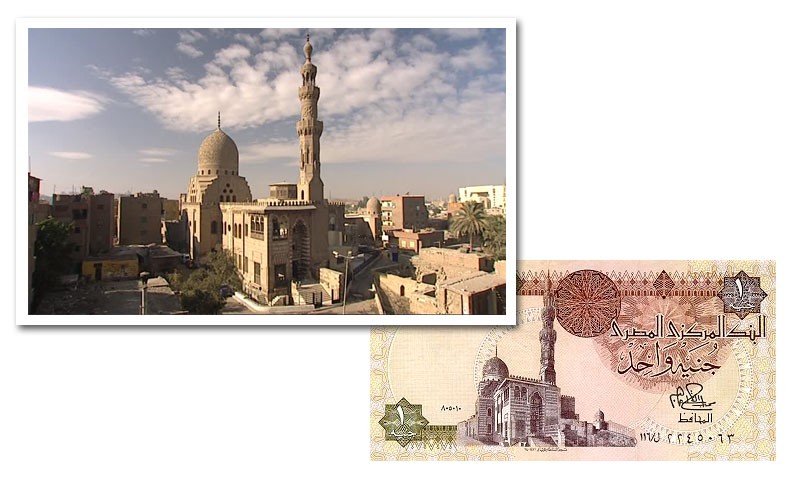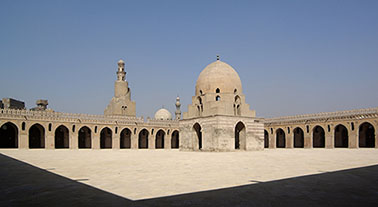Last year on my birthday I wanted to do something different, and being a heritage lover I convinced my closest friends to go on an early morning expedition to visit all the mosques printed on our Egyptian bank notes. Time constrains lead us to visit only two, but the journey still continues.
“The reign period of Sultan Qaitbay in the Mamluk era introduced new techniques and decorative patterns to Mamluk art.”
We started the journey with the one pound note and we visited Qaitbay mosque, which is located in what is known as the Northern Cemetery or the Mamluk Desert. The reign period of Sultan Qaitbay in the Mamluk era introduced new techniques and decorative patterns to Mamluk art. The design on the dome is a radiating star from the tip of the dome to its base. The minaret of the mosque is considered a masterpiece of Mamluk Architecture. If you look closely, it resembles a twisted necklace that surrounds the neck of the top part of the minaret, also known as the bulb. The rest of the building is beautifully decorated whether on the exterior or the interior. It is truly a show stopper.
“We then moved to Ibn Tulun, which is printed of the five pound note. Ibn Tulun is famous for many things, and in Cairo, it is literally one of a kind.”
We then moved to Ibn Tulun, which is printed of the five pound note. Ibn Tulun is famous for many things, and in Cairo, it is literally one of a kind. It is located in what is known today as al-Khaifa district. When it was first built, the area was known as the city of al-Qatai’, the second formal city in the history of Islamic Egypt. Ahmed ibn Tulun, the founder, came as the governor of al-Fustat (first city established by the early Muslim settlers), and his descendents ruled Egypt for about 135 years. It is considered one of the earliest mosques in Egypt which remains in its original form since it was constructed. The influence and choice of architecture came from Ibn Tulun’s home town of Samarra in Iraq. It has one of the most unique minarets in the historical skyline of Cairo. The stairs of the minaret are on the outside, unlike any other minaret in Cairo. To get to the entrance of the mosque you have to take two sets of semicircular stairs that elevate the structure above street level. It is by far one of the most tranquil and peaceful places in Cairo. You don’t hear the noise of the cars passing by on what is one of the busiest streets in old Cairo. Many myths have risen up concerning the mosque and the integrity of Ahmed ibn Tulun. Some suggest that he built the mosque with unlawful money and that is why it never gained popularity among the population as a congregational mosque.
“The stairs of the minaret are on the outside, unlike any other minaret in Cairo.”
My fascination with these buildings continues and the curiosity to find more about them is still a priority and a hobby, and what Cairo has to offer is endless.
For further information you can check Cairo of the Mamluks by Doris Behrens-Abouseif and Ibn Tulun by Tarek Sweillam
Laila Marei has always had interest in heritage and culture. She switched her field of study from Political Science to Islamic Art and Architecture and got her masters from AUC. She has a great interest in heritage restoration and preservation. Her career goal is to work in community development through heritage preservation and spreading the sense of ownership for the monuments that the community lives among.



